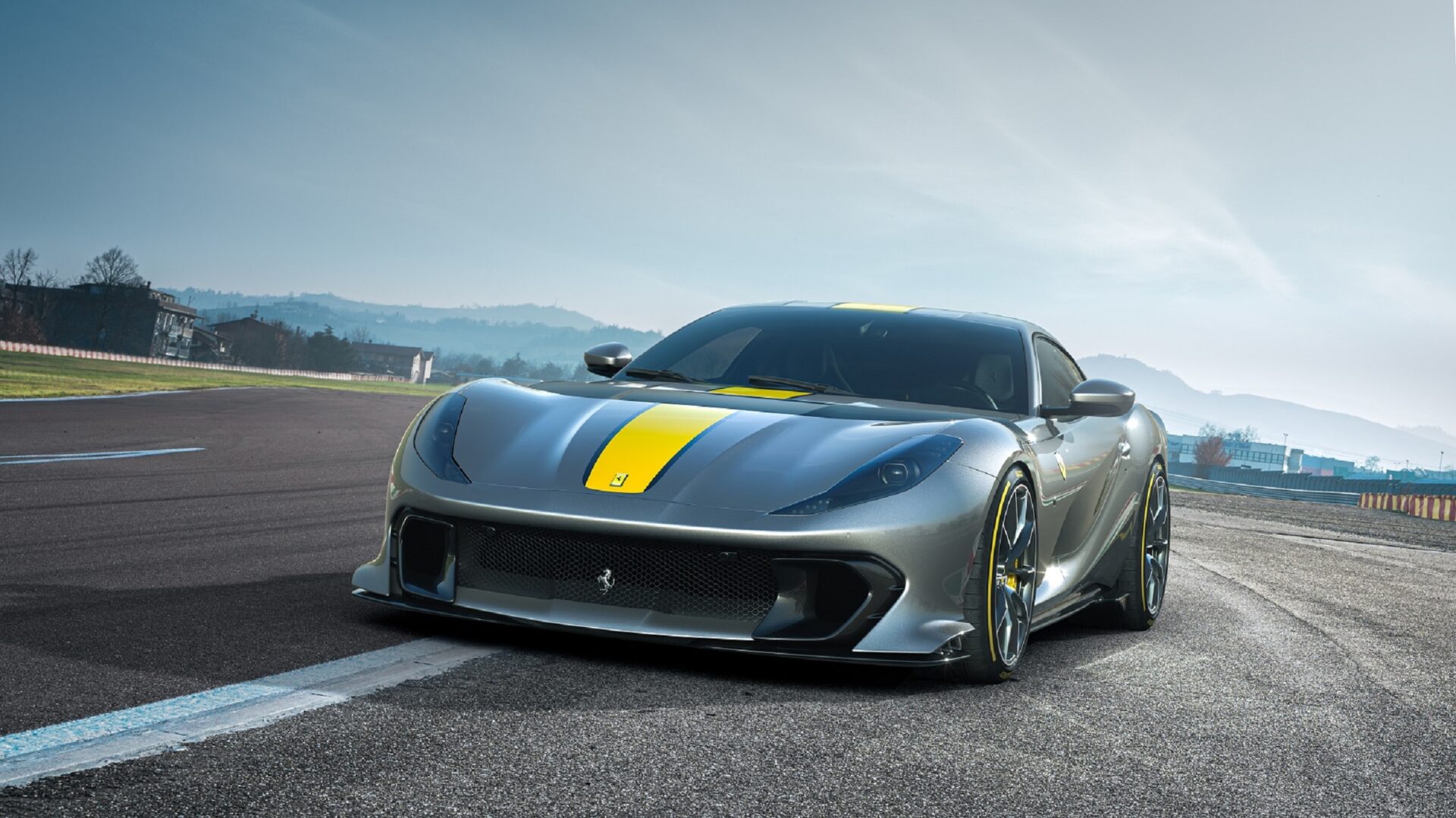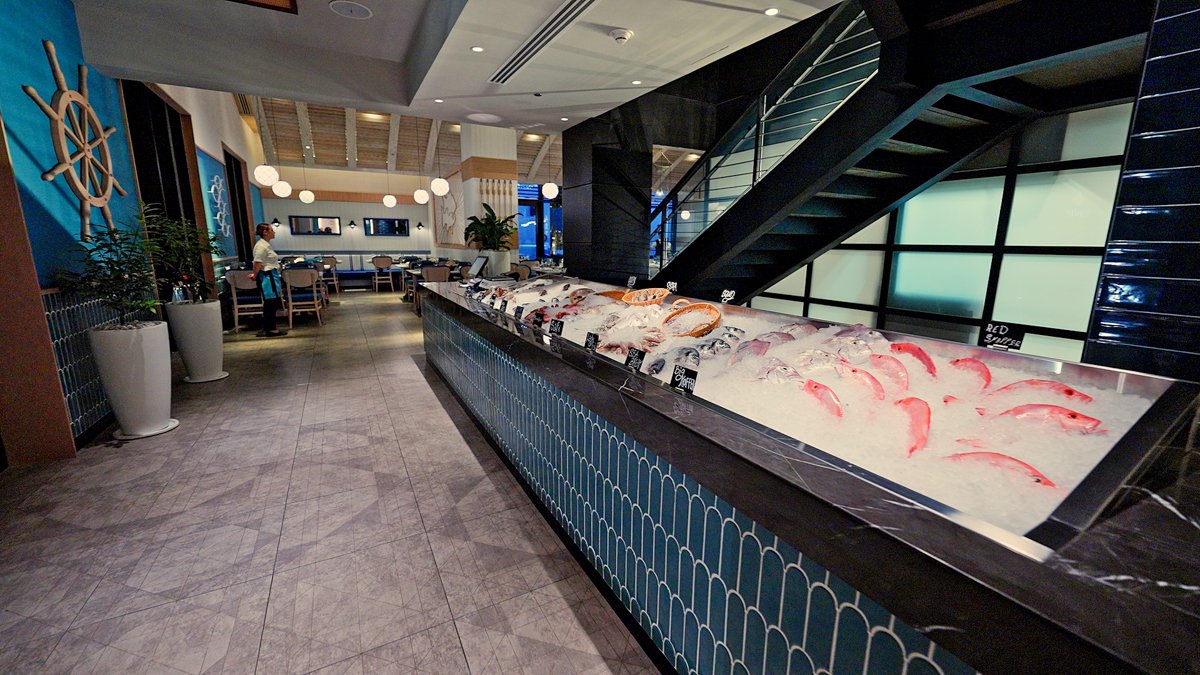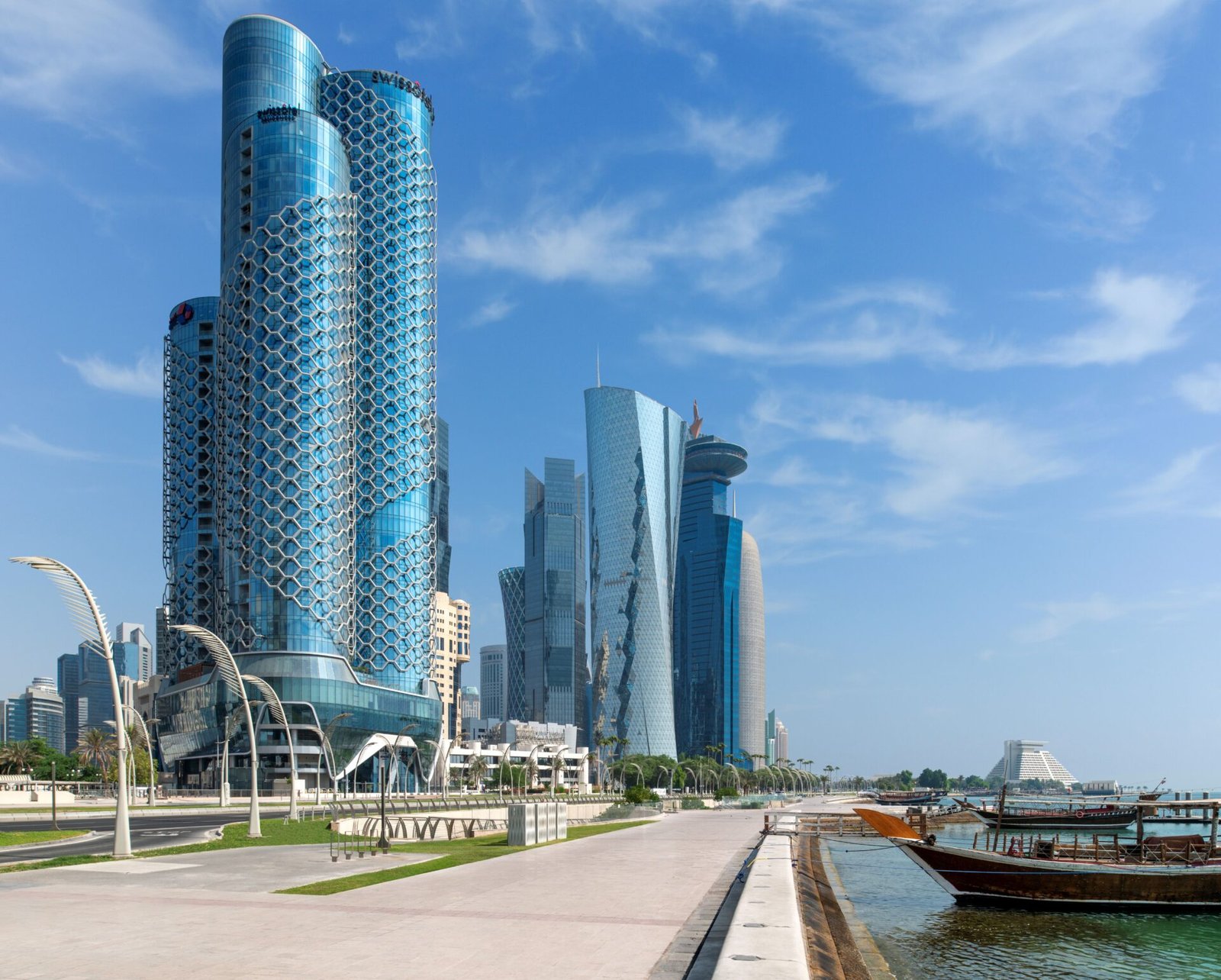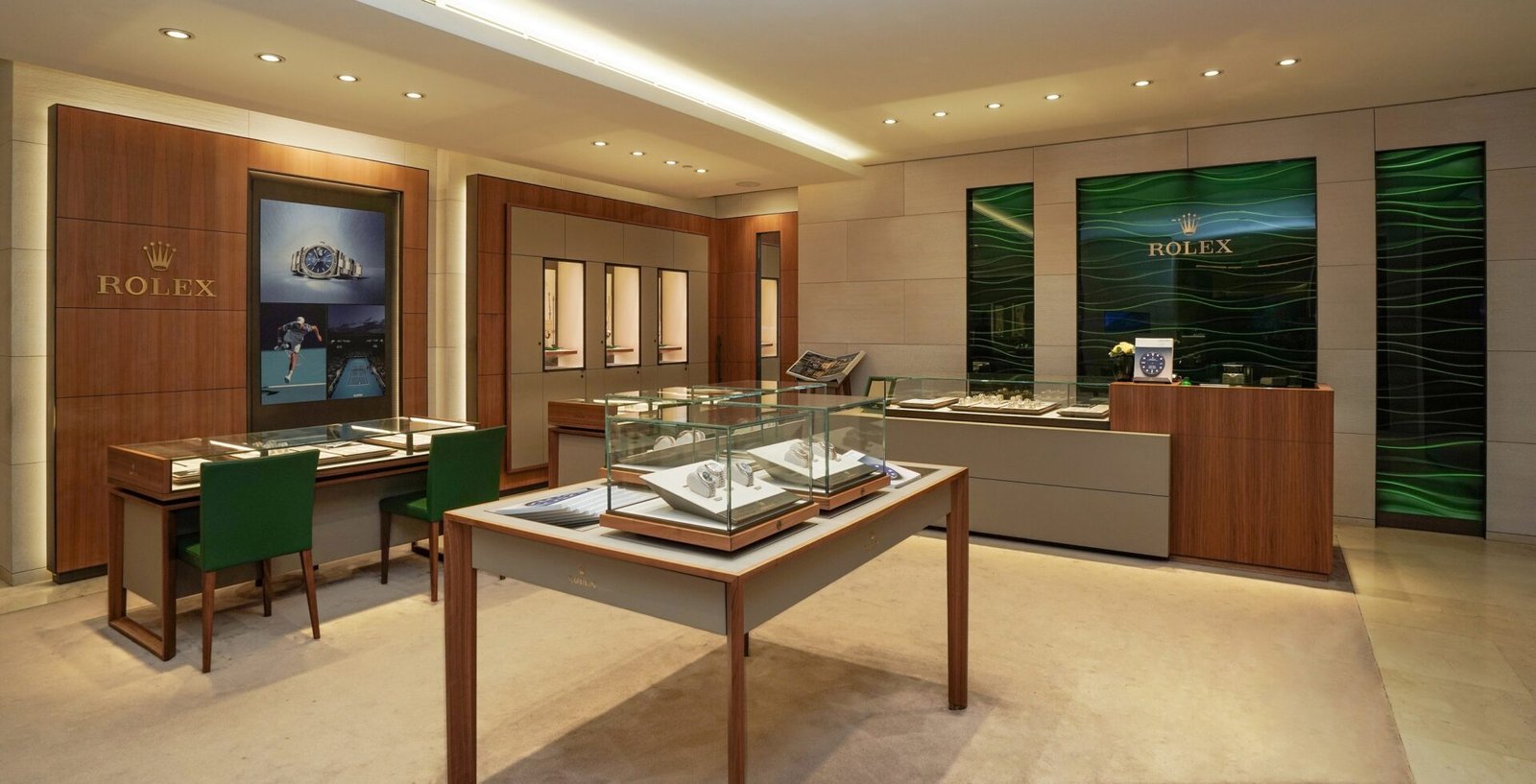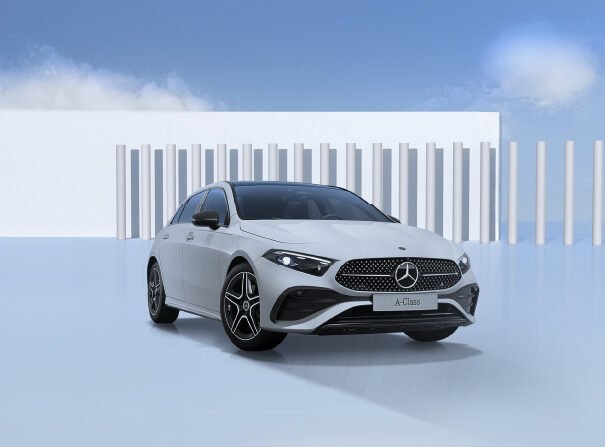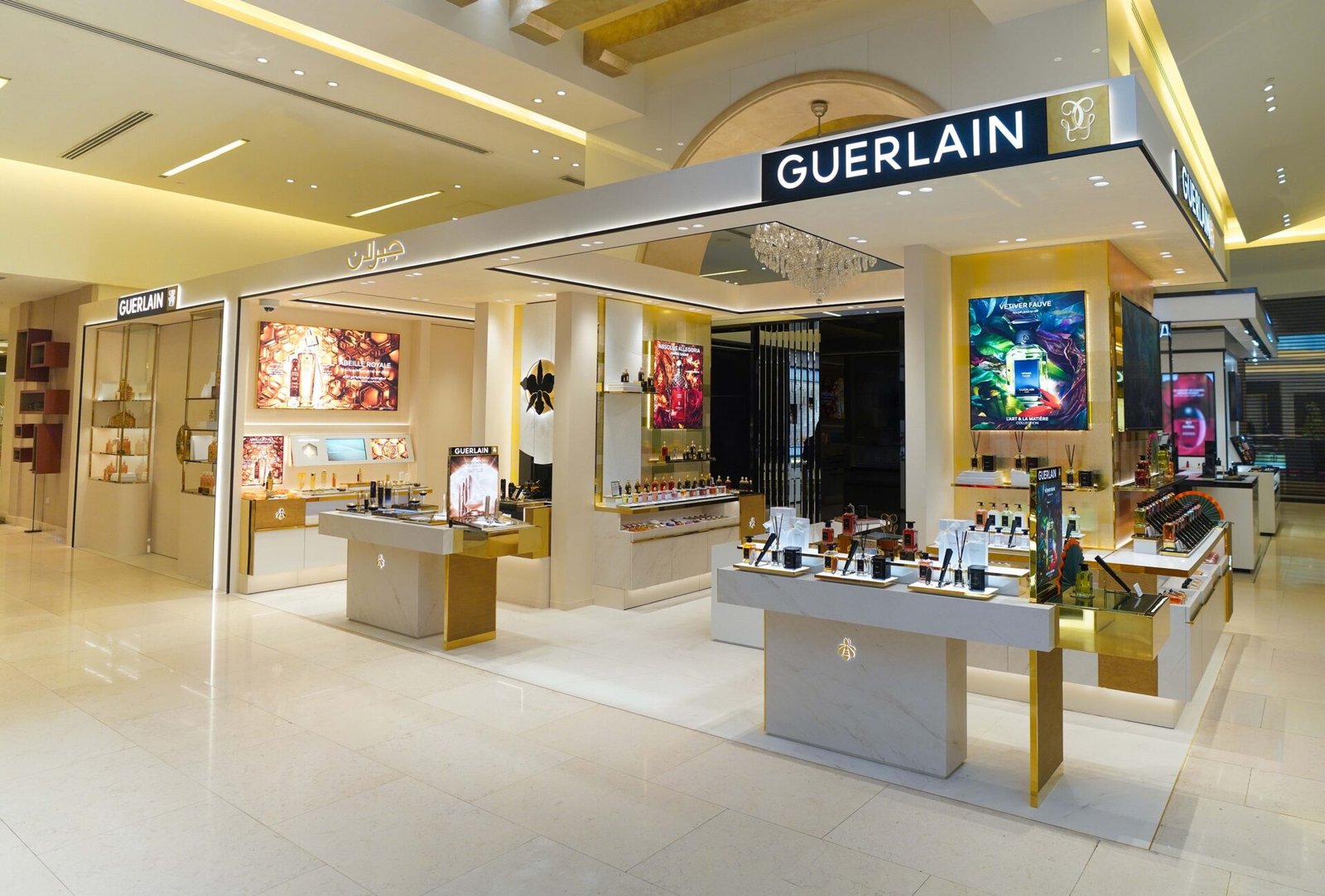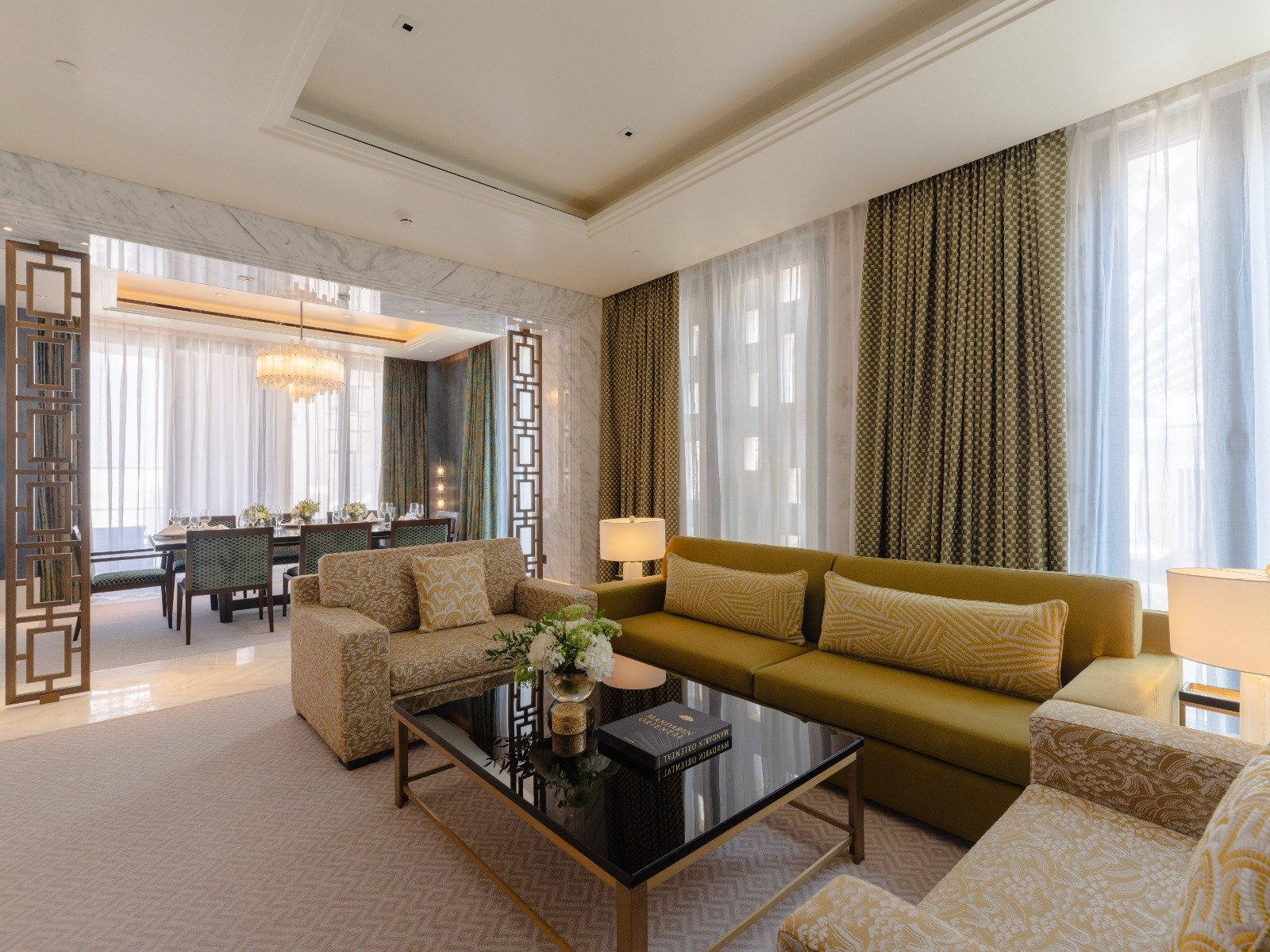The 812 Competizione, the new limited-edition special series car derived from the 812 Superfast, was presented today to media, clients and fans all over the world. In the course of the event, which was broadcast live on Ferrari’s social media channels, the wraps were also whipped off the 812 Competizione A, a spectacular Targa-top version, again a limited-series and an homage to the Prancing Horse’s glorious open-top tradition. After the hot laps Enrico Galliera, Ferrari’s Chief Marketing & Commercial Officer, officially presented the car and then unveiled the 812 Competizione A. This duo of cars is dedicated to a very exclusive group of collectors and enthusiasts of the most noble of Ferrari traditions, which focuses on uncompromising maximum performance. The innovative technological concepts applied to the engine, vehicle dynamics and aerodynamics have raised the bar to new heights.
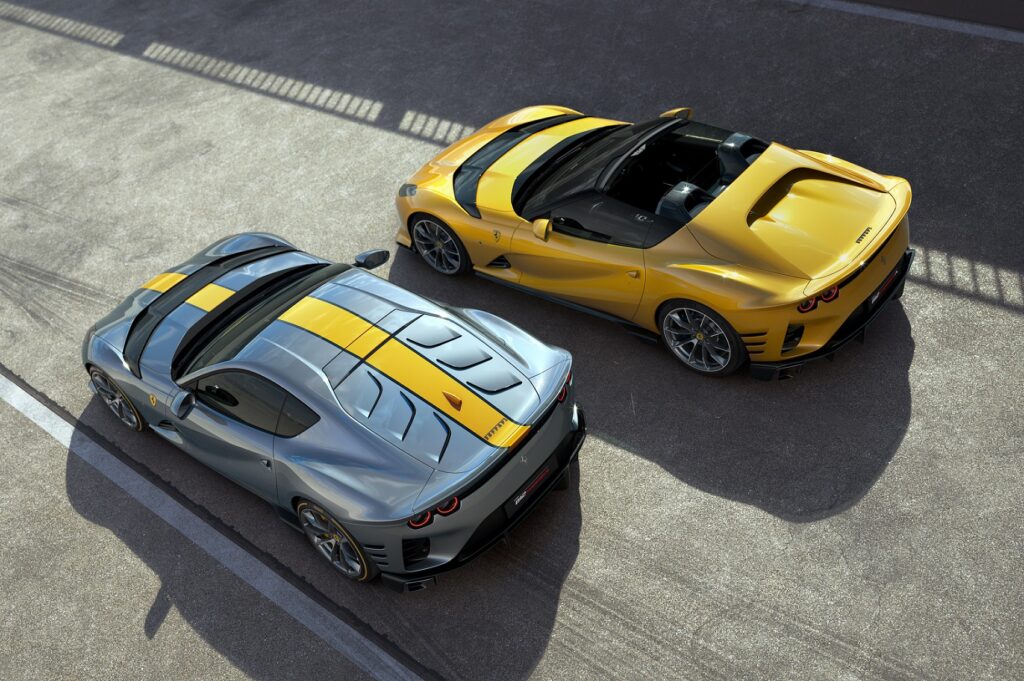
Once behind the wheel of the 812 Competizione and the 812 Competizione A, the driver becomes one with the car, regardless of whether it is on road or track.
POWERTRAIN
The result is a naturally-aspirated 830 cv engine that pairs impressive power with electrifying delivery and the inimitable soundtrack that Ferrari V12 purists know well. To boost the output of the engine, which has the same 6.5-litre displacement as the 812 Superfast’s V12, several areas have been significantly re-engineered to achieve a new record red line while optimising the fluid-dynamics of the intake system and combustion, and reducing internal friction. A result delivered by the meticulous redesign of key engine components such as the con-rods, pistons, crankshaft and distribution. The cam now actions the valve stems via DLC-coated steel sliding finger followers, which are derived from Ferrari’s F1 experience and were developed specifically for this engine to provide a higher lift profile.
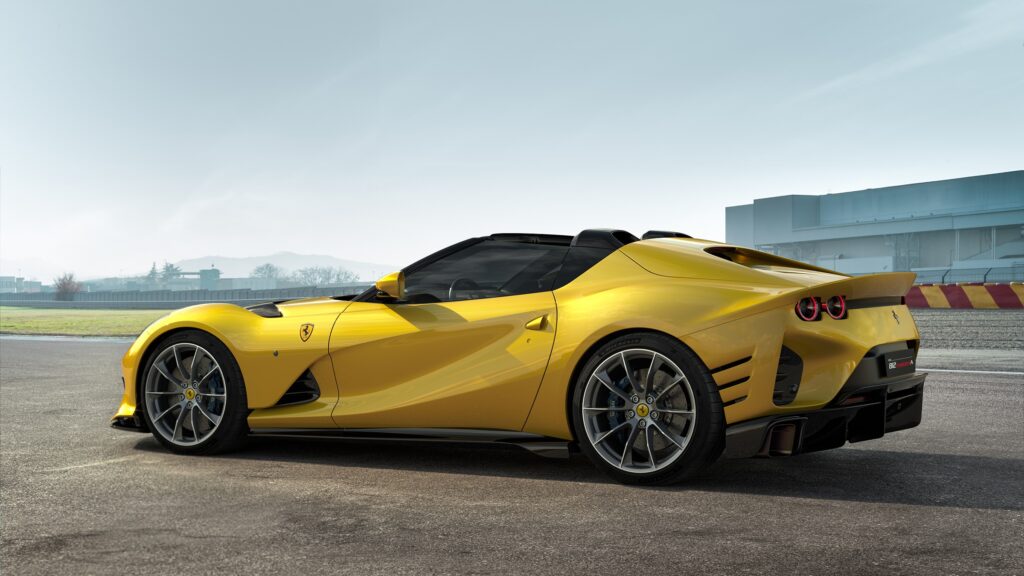
This enables the length of the intake tract assembly to be continuously modified, adapting it to the firing order to maximise the dynamic charge in the cylinder. The result is an engine that revs with tremendous speed all the way to the cut off with no drop off towards the red line. To reduce friction and mechanical losses, thereby improving the engine’s overall efficiency, the engineers developed a new variable-displacement oil pump that continuously adjusts oil pressure across the engine’s entire operating range. The calibration of the timing and amount of fuel injected, as well as an increase in injection pressure, have reduced emissions and the generation of particulate, especially when the engine is cold.
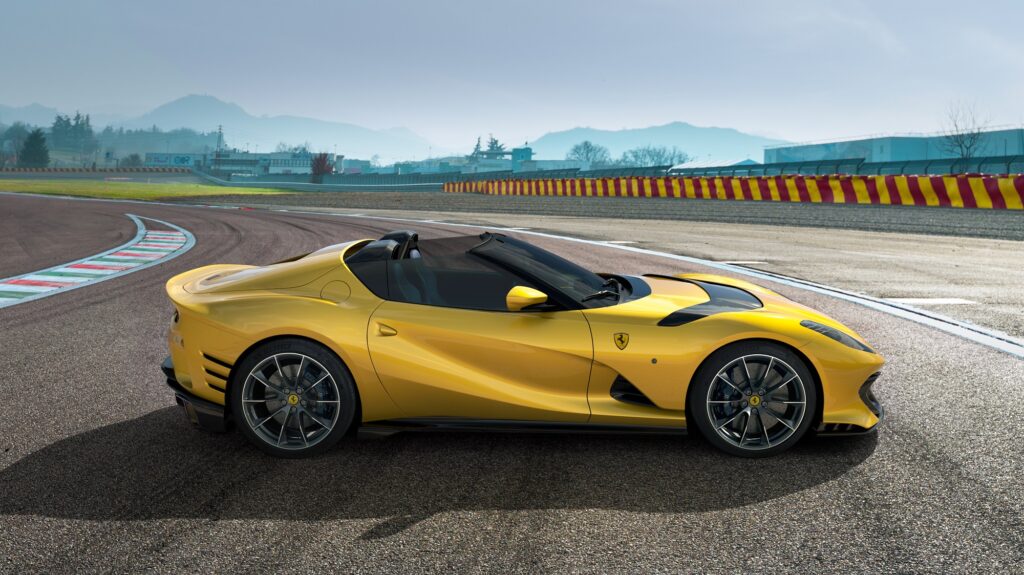
To maintain the traditional incredibly high standard of engine sound to which Ferrari V12 owners are accustomed, whilst simultaneously introducing a GPF to the exhaust system that ensures compliance with the very latest emissions regulations, the engineers added a new exhaust tailpipe. Both the 812 Competizione and 812 Competizione A are equipped with a seven-speed dual-clutch gearbox, pushing the performance of the latter to new extremes and delivering a new gearshift feeling for the V12. Although it retains the same gear ratios as the 812 Superfast, the new car’s changes are even more sporty, thanks to the extra 500 rpm in maximum revs allowed by the new V12. Hand-in-hand with the performance boost comes further fine-tuning of the cars’ respect of emissions norms with an evolution of the HELE system, which enables an on-the-move Start&Stop function, and a series of emissions-reducing engine maps, which maintain the signature Ferrari V12 sound even at low speeds.
When the HELE is deactivated, performance driving-oriented maps return with lightning fast gear-shifting for maximum response. The cooling system has also been adapted to cope with the additional heat generated by the new engine’s extra 30 cv, resulting in the introduction for the very first time on a Ferrari V12 of a single front air intake that maximises the amount air of cooling air channelled towards the radiators. The entire coolant circuit has also been improved, increasing cooling efficiency by 10 percent compared to the 812 Superfast. In addition, the single air intake has been further optimised to improve the fluid dynamics of the engine intake manifold, thereby minimising charge losses along the tract.
Lastly, the engine oil tank was redesigned to cope with the extra flow and to cope with the car’s greater lateral and longitudinal acceleration. Thanks to the optimisation of the interior chambers and volumes, the new tank saves over one kilo of oil compared to the 812 Superfast, making the 812 Competizione and 812 Competizione A the cars that require the least oil in the current V12 range.
AERODYNAMICS
The increase in both the 812 Competizione’s engine output and maximum revs have resulted in a consequent increase in the heat to be dissipated. While on the 812 Superfast, the engine air intakes are set either side of the large central grille, the 812 Competizione adopts an integrated solution with a single air duct. This allowed the intake for the engine radiators to be extended sideways as far as the chassis allowed as well as reducing not just weight, but also losses to the intake plenum and thus the combustion chamber, which in turn, improved the overall performance. All of this translates into 10 percent more efficient cooling of the engine fluids than in the 812 Superfast.
Brake cooling is fundamental to avoiding compromising on either downforce generation at the front of the car or on the weight of the brakes themselves. Compared to the 812 Superfast, the brake cooling concept was completely redesigned around the new front «Aero» calliper which debuted on the SF90 Stradale and which has an air intake integrated into its casting. Ventilation of the callipers and the pads is achieved by channelling the cool air captured by the generous opening on the side of the bumper towards the integrated air intake which then distributes the air flow inside the component. The removal of the 812 Superfast’s turning vanes and specific duct shaved a further 1.8 kg off the car’s weight, thus compensating for the additional weight of the «Aero» calliper.
Two carbon-fibre side air intakes for the brakes flank the main grille, which feeds cooling air to the engine and cockpit. Thanks to the latter, the charged flow that strikes the side of the bumper is channelled and used to reduce the turbulence generated by the outer part of the tyre tread, thereby improving the front downforce generated by the outside edge of the bumpers. Optimising thermal flows was a fundamental part of developing the 812 Competizione’s front underbody. This translated into a smaller area of the underbody being affected by apertures that would negatively impact downforce generation.
The end result was a higher level of downforce at the front and a more energised flow striking the rear of the car. The modifications made to the braking system also enabled the engineers to redesign the front underbody to extend it into the wheelarch well. The new layout, which freed up space around the lower front wishbone, made it possible to extend the surface area that could be used to generate downforce. It also allowed the insertion of a new S-shaped side vortex generator crafted specifically in the wind tunnel to improve the lateral expansion of the vortex generated and ensure it works in synergy with the front diffuser.
The geometry of the latter was also optimised and can now generate even more downforce than the 812 Superfast as well as improving cooling of the calliper. Like on the 812 Superfast, the front diffuser is equipped with a passive mobile aero system which opens over 250 km/h. When the panel rotates it completely stalls the diffuser allowing the car to reach its maximum speed. The 812 Competizione’s distinctive tail-end treatment incorporates a number of innovative engineering solutions regarding the exhaust layout, diffuser geometry, spoiler volume, patented rear screen and the bumper design.
The rear diffuser extends right across the full width of the car to guarantee maximum horizontal expansion of the underbody’s aerodynamic flows and hails a distinct break with the solution seen on the 812 Superfast. In this configuration, the hot flow of gas from the exhaust pipes interacts with the prominent curved exterior fences on the diffuser, generating extra vorticity at the trailing edge of the fences, which energises the «cold» flow from the diffuser thereby guaranteeing additional downforce. Overall, the rear diffuser development produced an increase in downforce that equates to 25 percent of the total increase compared to the 812 Superfast. The rear underbody, on the other hand, is responsible for a 10 percent increase in rear downforce.
The aerodynamic development of the diffuser forms allowed the areas of the car dedicated to downforce generation to be extended transversely. The spoiler is now not only higher than on the 812 Superfast, but extends across almost the entire width of the car, working in perfect aerodynamic synergy with the diffuser to guarantee maximum downforce possible over the rear axle. From the LaFerrari onwards, vortex generators of this type have been used on production cars to maximise downforce generated by the flat underbody. However, this solution was applied to the rear screen on the 812 Competizione to distort the flow and thus redistribute the rear axle’s pressure field.
These vortex generators further enhance the work of the rear spoiler-diffuser system, creating areas of strong pressure gradients in the flow immediately above the rear screen and generating vortexes on the transverse plane. Thanks to this solution, part of the flow is deflected towards the sides of the spoiler which boosts downforce generation, benefiting the efficiency of the diffuser. The patented vortex generators alone guarantee 10 percent of the total increase in rear downforce compared to the 812 Superfast. In addition to recalling the F12tdf, they also hide a system of three aerodynamic flicks.
In the 812 Competizione A, to compensate for the impact of the removal of the vortex generators, a bridge element has been introduced between the flying buttresses. Thanks to meticulous optimisation, the flow is deflected effectively and efficiently towards the rear spoiler, essentially restoring the downforce to the same level as the 812 Competizione. Two aerodynamic apertures have been created between the two buttresses to manage the flow entering over the side windows and to force it to follow a specific route, a fundamental factor in reducing both pressure inside the cabin and the instability of the flow itself. The result of this strategy is twofold because, aside from improving comfort, it also increases aerodynamic efficiency by making the flow stable even when the top is open.
VEHICLE DYNAMICS
The guidelines in the development of the812 Competizione performance strategy were to boost overall performance levels, improve driving pleasure in lateral dynamics and a specific focus on the handling characteristics of a special version. The 812 Competizione debuts many innovative components and contents, which have ensured it delivers on its vehicle dynamics performance targets. Specifically, these include the first use of independent four-wheel steering, the evolution of the Side Slip Control system to version 7.0, and the development of the dedicated new Michelin Cup2R tyres. The independent rear-wheel steering features a new electronic management system that enables the right and left actuators to be actioned individually rather than synchronised.
This evolution yields a significant boost in performance in relation to the control of the position demanded of the individual actuators, and quicker response times. This system emphasises the front axle’s response to steering wheel commands, maintaining the feeling of grip from the rear axle, which responds promptly to front inputs, and also manages the car’s lateral dynamics response more efficiently as a function of the actuation frequency of the steering wheel angle. The new solution has resulted in the evolution of the SSC system which brings together all of the control systems developed in-house and uses a shared dynamic control language to integrate the actions of all of the systems to improve efficiency. The inside of the channel and of the spokes is coated in a layer of white aerospace-derived paint that reflects and dissipates heat produced by the car’s extremely efficient braking system, guaranteeing consistent performance over time even under hard use on the track.
EXTERIOR
The 812 Competizione has a personality all of its own that sets it very clearly apart from the 812 Superfast in terms of its proportions and formal balance. The engineering modifications adopted allowed the Ferrari Styling Centre to give the car a whole new connotation, by choosing styling themes that further enhance its architectural design, sculptural forms and sporty vocation. One of the 812 Competizione’s many striking features is its bonnet, which has a transverse groove in which the carbon-fibre blade sits. This proved an original way of disguising the air vents for the engine bay, whilst also increasing their surface area.
From a design perspective, the choice of this transverse element rather than the louvres seen on some previous Ferrari sports cars, means that the bonnet looks cleaner and more sculptural. The most noticeable aspect of the 812 Competizione’s aesthetic is the replacement of the rear screen by an all-aluminium surface. The vortex generators on the upper surface that boost the car’s aerodynamic efficiency simultaneously create a backbone effect that underscores the car’s sculptural forms. Not having a rear screen also creates a textural continuity between roof and spoiler, providing owners with the opportunity to personalise the car even more with a whole new single continuous graphic livery that runs unbroken its entire length.
Even the rear spoiler now looks more imposing. They fit seamlessly into a slit just below the spoiler and contribute to creating the horizontal feel to the rear. The rear bumper is particularly sculptural and characterised by a scoop at wheel height that incorporates two imposing air vents. Three aerodynamic slots have been created along the outer bumper surface rear of the wheels, creating an instantly recognisable styling feature that recalls the shape of the vortex generators on the rear screen.
COCKPIT
In terms of its interior architecture, the 812 Competizione has remained faithful to the 812 Superfast, retaining the same general parameters and main dash and door panel interfaces, including the latter’s signature «diapason» motif. Right in the central area of the cockpit is a link between Ferrari’s past and future, the iconic gear-gate theme here given a modern twist. This is the first time it has appeared on a V12 car and is very much mirrors the spirit of the 812 Competizione and the marque’s tradition.
812 Competizione A
The 812 Competizione A provided the Ferrari Styling Centre with the opportunity to use the modifications required for the rear of the car to create a truly unforgettable architecture. The flying buttress concept, which has long been a much-loved part of Ferrari tradition, harmonises effortlessly with the arrow theme of the front created by the blade and lends a sense of forward thrust to the car’s body, but also gives it a completely different connotation to the coupé. The car’s centre of gravity appears lower, particularly when seen from the side, not only because of the roof and wraparound windscreen that flows into the side windows, but also because the flying buttresses at the rear are lower than in the 812 Competizione.
7 YEARS MAINTENANCE
Available across the entire range, it covers all regular maintenance for the first seven years of the car’s life. This scheduled maintenance programme is an exclusive service that allows clients the certainty that their car is being kept at peak performance and safety over the years. The Genuine Maintenance programme further extends the range of after-sales services offered by Ferrari to satisfy clients wishing to preserve the performance and excellence that are the signatures of all cars built in Maranello.



